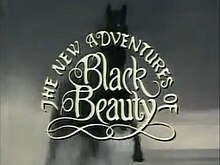Chapter 24: The Lady Anne, or a Runaway Horse
byChapter 24: The Lady Anne, or a Runaway Horse begins during the freshness of spring when Lord W—- and much of his household travel to London, leaving the estate in quieter hands. Black Beauty and Ginger remain behind, tended by the head groom and a few family members who chose to stay. Among them is Lady Anne, a confident and experienced horsewoman who takes particular liking to Black Beauty, calling him “Black Auster.” She often rides him across the countryside with grace and control, earning his admiration for her gentle yet firm handling. Alongside her is a gentleman named Blantyre, who often rides Lizzie, a spirited but uneasy mare. While Lizzie is high-strung and skittish, Lady Anne feels capable of managing her and suggests taking her for a ride instead of her usual mount. Though Blantyre advises against it, citing Lizzie’s nervousness, Lady Anne insists, believing her skills will compensate.
Not long after Lady Anne sets off, a group of young colts galloping nearby startles Lizzie. Their unexpected dash across the pasture sparks panic in the mare, whose nerves fray under the pressure of the moment. Within seconds, Lizzie bolts uncontrollably, ignoring Lady Anne’s attempts to rein her in. Despite Anne’s composed riding and strong hands, the mare’s fear overpowers any cues. Meanwhile, Blantyre, having gone to run a small errand at Anne’s request, returns to find Black Beauty agitated and without his rider. The horse’s distress and empty reins signal that something is terribly wrong. Blantyre mounts quickly, sensing urgency in Black Beauty’s posture. Without hesitation, they set off to follow Lizzie’s trail, relying on signs left in the dirt and the guidance of passersby who saw the mare rush past.
The chase is intense, with Black Beauty’s speed pushed to the limit. Despite the danger, he runs swiftly and surely under Blantyre’s direction, determined to reach Lady Anne. They cross fields and fences, their hearts pounding as every moment counts. Eventually, they spot Lizzie ahead—stumbling and then falling. The mare crumples, and Lady Anne is thrown, landing hard and lying still. Blantyre dismounts and rushes to her side, panic etched across his face. He checks for signs of life and, finding her unconscious but breathing, quickly enlists the help of a nearby laborer to fetch a doctor and summon a carriage from the estate. Black Beauty stands beside them, winded but alert, watching the scene with quiet anxiety. His presence brings a sense of calm, grounding the moment in silent strength.
As help arrives and Lady Anne is carried home, Black Beauty reflects on the chaos. The event underscores how even the most experienced rider can be caught off guard by a nervous horse and an unpredictable moment. Lizzie’s temperament, paired with the unexpected stimulus of the young colts, created a situation no one could have fully controlled. It also reveals the deep bond between humans and horses—how instinct, training, and mutual trust can still fall short against raw fear. Yet, within the fear and injury, there is resilience. Blantyre’s quick thinking and Beauty’s reliability helped prevent an even worse outcome. The trust placed in the horse and rider, though shaken, is not broken. The care taken after the accident—summoning aid, providing comfort, and ensuring recovery—demonstrates a shared respect between species.
This chapter serves as a reminder that judgment and experience, though vital, must be paired with caution. Confidence should never outpace understanding, especially when dealing with an animal known to spook easily. The emotional toll of seeing Lady Anne fall affects everyone, and Beauty’s thoughts echo the weight of responsibility that riders carry—not just for themselves, but for the lives of those they guide. His reflection is neither critical nor bitter, but honest. Through it, Anna Sewell illustrates the delicate balance required when handling horses: respect their nature, acknowledge their limits, and never underestimate the power of a single, unanticipated moment. In this tale of risk and rescue, the depth of care between horse and rider is laid bare—not in the triumph of a gallop, but in the silence that follows a fall.

